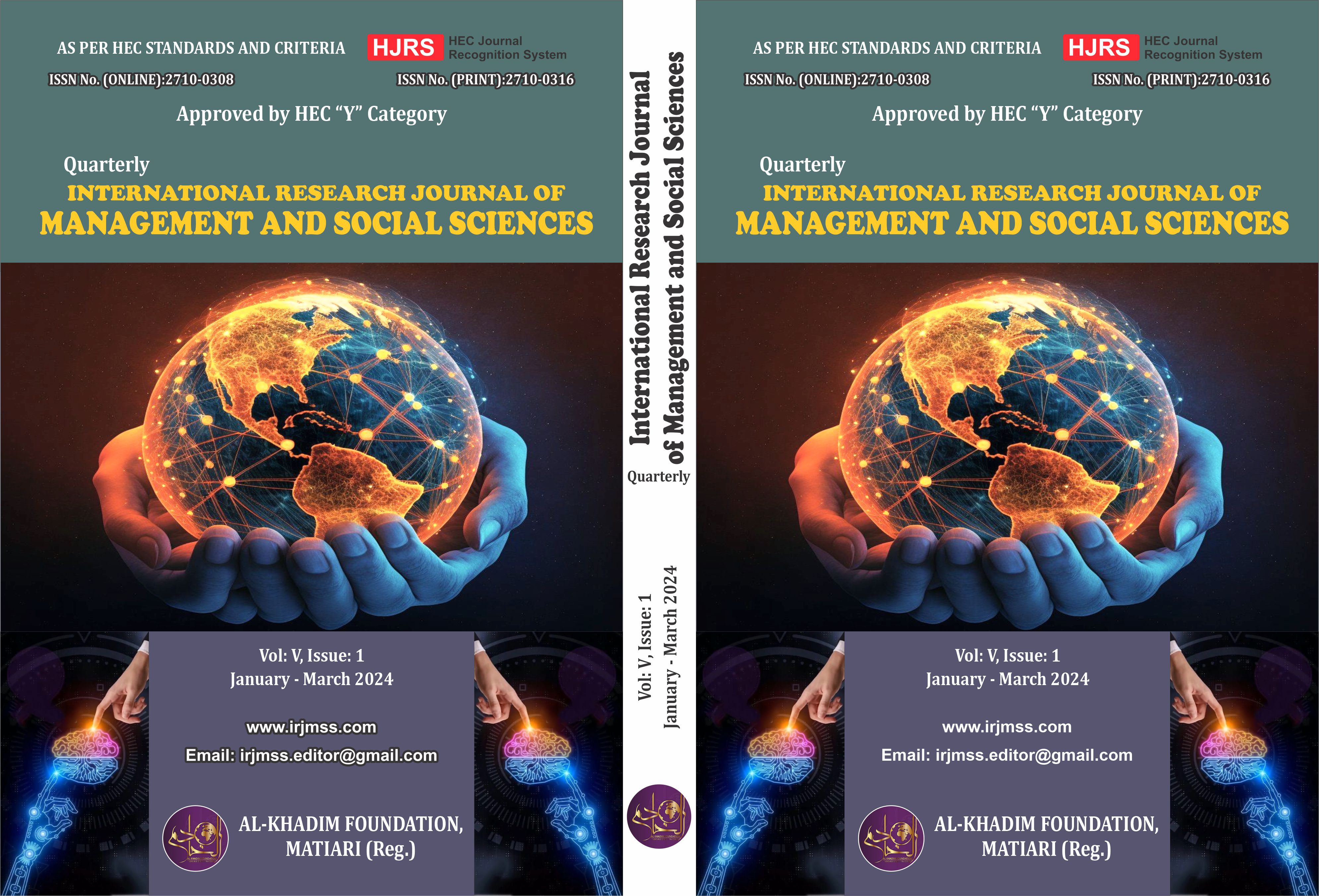Physical Activity as a Tool for Promoting Mental Health in Elementary Education
Keywords:
Physical activity, Mental health, Students' well-being, Exercise and mental health, Cognitive functioning, Anxiety and depression, Self-esteemAbstract
This research aimed to examine the role of physical activity in elementary school curricula to improve students' mental health. Quantitative methods were used in the investigation. Examining the connection between students' mental health and physical activity at a certain moment in time was done using a correlation research methodology. Students enrolled in the public elementary schools of District Layyah were the intended subjects of this research. Three hundred seventy-eight kids from grades 6, 7, and 8 made up the study's overall population size. Three hundred and eighty-one pupils were randomly selected from the entire student body. We gathered data on physical activity and mental health indicators using a survey questionnaire. In order to gather the necessary information from the chosen primary school kids, structured surveys were utilized. Various statistical methods were used to examine the acquired data, including descriptive and inferential statistics. Distributions of frequencies, standard deviations, and means were among the descriptive statistics used to summarize the data. Correlation analysis was used to evaluate connections between physical activity levels and mental health outcomes among elementary school pupils, as part of the data analysis that included descriptive and inferential statistics. The significance level for all statistical tests was set at p < 0.05. The data analysis was done in tabular and chart forms to make sure the results were easy to grasp and interpret. The findings answered both the study questions and the conclusions. Developing educational best practices, policies, and parental involvement in providing a healthy, active lifestyle for primary school students were all bolstered by the study's potential to improve understanding of the optimal relationship between physical activities and students' mental health. According to previous research, active lifestyles are associated with higher self-esteem, lower anxiety and sadness, and better cognitive performance. Educators, legislators, and parents can all benefit from the study's findings on the importance of physical activity in children's lives. The findings can inform evidence-based guidelines, actions, and policies to improve physical and mental health.
References
Castelli, D., Centeio, E., Hwang, J., Barcelona, J., Glowacki, E., Calvert, H., & Nicksic, H. (2014). VII. The history of physical activity and academic performance research: Informing the future. Monographs of the Society for Research in Child Development, 79, 119–148. https://doi.org/10.1111/mono.12133
Ginsburg, (2007). The Importance of Play in Promoting Healthy Child Development and Maintaining Strong Parent-Child Bonds. Pediatrics, 119(1), 182–191. https://doi.org/10.1542/peds.2006-2697
Johnson, T. G., & Turner, L. (2016). The Physical Activity Movement and the Definition of Physical Education. Journal of Physical Education, Recreation & Dance, 87(4), 8–10. https://doi.org/10.1080/07303084.2016.1142192
Li, B., Ng, K., Tong, X., Zhou, X., Ye, J., & Yu, J. J. (2023). Physical activity and mental health in children and youth during COVID-19: a systematic review and meta-analysis. In Child and Adolescent Psychiatry and Mental Health (Vol. 17, Issue 1). BioMed Central Ltd. https://doi.org/10.1186/s13034-023-00629-4
Li, J., Huang, Z., Si, W., & Shao, T. (2022). The Effects of Physical Activity on Positive Emotions in Children and Adolescents: A Systematic Review and Meta-Analysis. In International Journal of Environmental Research and Public Health (Vol. 19, Issue 21). MDPI. https://doi.org/10.3390/ijerph192114185
Mahindru, A., Patil, P., & Agrawal, V. (2023). Role of Physical Activity on Mental Health and Well-Being: A Review. Cureus. https://doi.org/10.7759/cureus.33475
Peluso, M. A. M., & Andrade, L. H. S. G. de. (2005). PHYSICAL ACTIVITY AND MENTAL HEALTH: THE ASSOCIATION BETWEEN EXERCISE AND MOOD. Clinics, 60(1), 61–70. https://doi.org/10.1590/S1807-59322005000100012
Piñeiro-Cossio, J., Fernández-Martínez, A., Nuviala, A., & Pérez-Ordás, R. (2021). Psychological wellbeing in physical education and school sports: A systematic review. In International Journal of Environmental Research and Public Health (Vol. 18, Issue 3, pp. 1–16). MDPI AG. https://doi.org/10.3390/ijerph18030864
Ratey, J. J. (2008). Spark: The revolutionary new science of exercise and the brain. In E. Hagerman (Ed.), Spark: The revolutionary new science of exercise and the brain. Little, Brown and Co.
Salmon, P. (2001). Effects of physical exercise on anxiety, depression, and sensitivity to stress. Clinical Psychology Review, 21(1), 33–61. https://doi.org/10.1016/S0272-7358(99)00032-X






